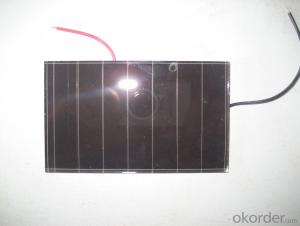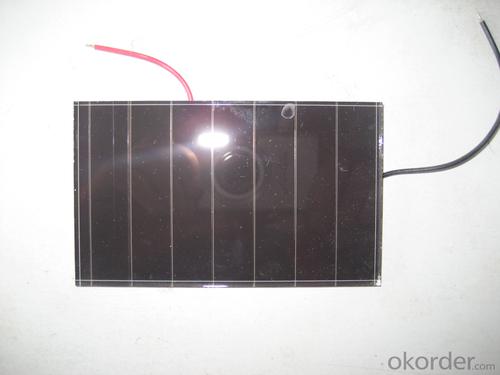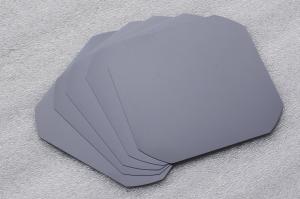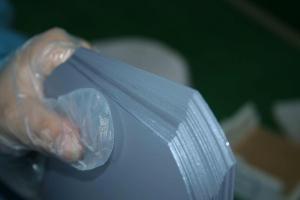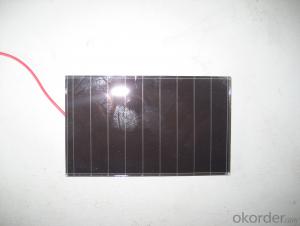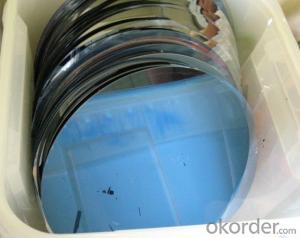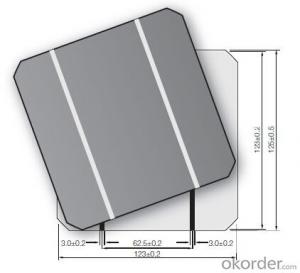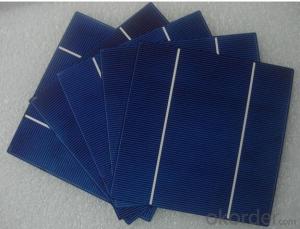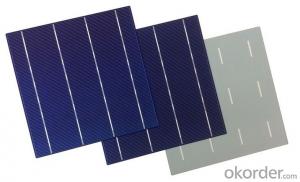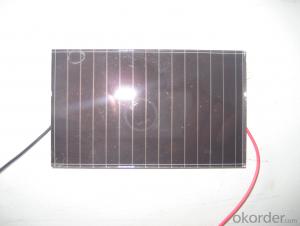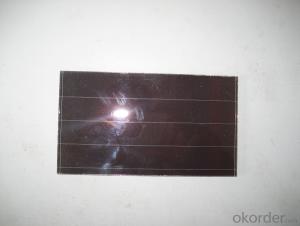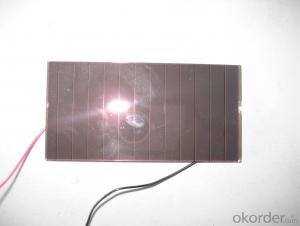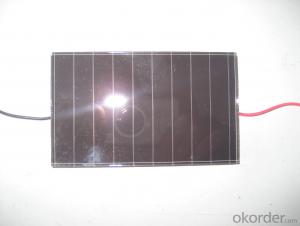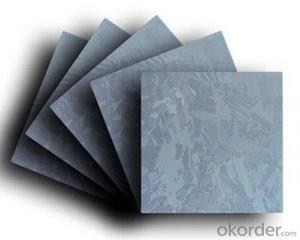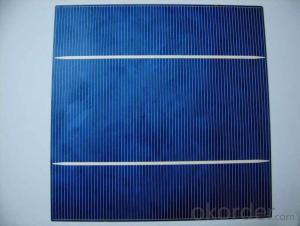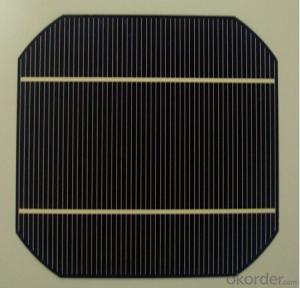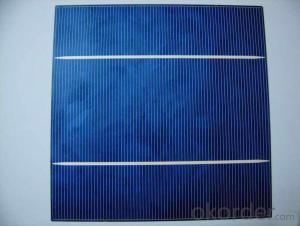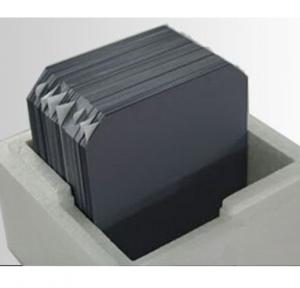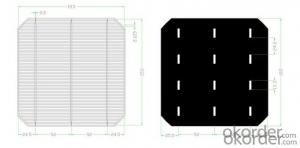IC Grade Amorphous Silicon Dice Specification 3 Solar Silicon Wafer
- Loading Port:
- China Main Port
- Payment Terms:
- TT OR LC
- Min Order Qty:
- -
- Supply Capability:
- -
OKorder Service Pledge
OKorder Financial Service
You Might Also Like
Pv modules at present, the mainstream products are still in silicon as the main raw materials, only in terms of silicon raw material consumption, production 1 mw of crystalline silicon solar cell, need 10 to 12 tons of high purity silicon, but if use the same silicon materials used to produce thin film amorphous silicon solar cell can produce more than 200 mw.
From the perspective of energy consumption, amorphous silicon solar battery only 1-1.5 years of energy recovery period, more embodies its contribution to energy saving in the manufacturing process.
Component occupies a high proportion of costs in a photovoltaic system, the component prices directly affect the system cost, and thus affect the cost of photovoltaic power generation. Calculated at the current price of components, the same money, buy amorphous silicon products, you can get more close to 30% of the power components.
2, more power
For the same power of solar cell array, amorphous silicon solar cell is about 10% more than monocrystalline silicon, polycrystalline silicon battery power. This has been the Uni - Solar System LLC, Energy Photovoltaic Corp., Japan's Kaneka Corp., the Netherlands Energy research institute, and other organizations and experts confirmed that the Photovoltaic industry.
In sunny, that is to say, under the high temperature, amorphous silicon solar cell components can show more excellent power performance.
3, better low light response
Due to the characteristics of amorphous silicon atoms are arranged disorderly, the electron transition no longer comply with the restriction of traditional \"selection rule\", as a result, its light absorption characteristics and there are big differences monocrystalline silicon material. Amorphous silicon and monocrystalline silicon material absorption curve as shown
, amorphous silicon absorption curve has obvious three sections (A, B, C). Area A corresponding electronic transition between localized states, such as the gap state near Fermi level and to the tail state transition, the absorption coefficient is small, about 1-10 cm - 1, for this is absorbing; B area absorption coefficient with the increase of the photon energy index rose, it corresponds to the electrons from the valence band edge extension state to the conduction band localized state transition, as well as the localized electrons from the valence band tail states guide for edge extension state transition, the region's energy range is usually only about half of the electron volts, but absorption coefficient across two or three orders of magnitude, usually up to 104 cm - 1; Area C corresponds to the electrons from the valence band to the conduction band internal internal transition, the absorption coefficient is bigger, often in more than 104 cm - 1. After two absorption area is crystalline silicon eigen absorption area.
Can be seen in the figure, the intersection of two curves about 1.8 ev. It is important to note that in the visible light range (1.7 to 3.0 ev), the absorption coefficient of amorphous silicon material is almost an order of magnitude larger than the single crystal silicon. That is to say, in the morning the first part of the sun is not too strong, the second half, and it's cloudy in the afternoon under the condition of low light intensity, long wave is greater, the amorphous silicon material still has a large absorption coefficient. Again considering the amorphous silicon band gap is larger, the reverse saturation current I0 is smaller. And as mentioned the amorphous silicon battery the characteristics I - V characteristic curve of the amorphous silicon solar cell both in theory and in practical use in low light intensity has good adaptation.
• I - V characteristics of amorphous silicon cells after more than a Vm with the voltage drop slowly
In order to be convenient, we draw the I - V characteristics of two kinds of batteries on the same picture. Crystalline silicon and amorphous silicon battery I - V characteristics of general shape as shown
we see from the picture, two kinds of cells in the curve changes after exceed the maximum output power point gap is bigger. Output current of crystalline silicon cells after exceed the maximum output power point will soon fall to zero, curve steep; Rather than crystalline silicon cells output current after a long distance to fall to zero, the curve is relatively flat. Two kinds of battery Vm equivalent to about 83% of its open circuit voltage and 83% respectively.
when light intensity gradually become hour, short circuit current and open circuit voltage of solar battery will be stronger. Short circuit current decreases faster, of course, open circuit voltage decrease more slowly.
do in battery solar cell array under the condition of load, when the sun battery array of effective output voltage less than the terminal voltage of battery, battery cannot be recharged. When the light intensity gradually become hour, crystal silicon battery charging does not meet the conditions, and amorphous silicon due to the larger voltage difference, do not charge until the light is very dark, effectively increase the use of sunlight time. So, amorphous silicon cells to produce more electricity than the crystalline silicon.
4, more excellent high temperature performance
High in the outdoor environment temperature, amorphous silicon solar cell performance change, depends on the temperature, spectrum, as well as other related factors. But what is certain is: amorphous silicon than monocrystalline silicon or polycrystalline silicon are less likely to be affected by temperature.
Amorphous silicon solar cells than monocrystalline silicon, polycrystalline silicon cells have relatively small temperature coefficient of amorphous silicon solar cell output power best Pm temperature coefficient is about 0.19%, and monocrystalline silicon, polycrystalline silicon cells best output power Pm temperature coefficient is about 0.5%, when the battery work at higher temperatures, the two batteries will be a drop in the Pm, but the decline is different. They can be calculated using the following formula.
- Q: What is the role of a bypass diode in a solar silicon wafer?
- The role of a bypass diode in a solar silicon wafer is to provide an alternative current path when a portion of the wafer is shaded or damaged. It helps prevent power losses by bypassing the shaded or damaged section, allowing the unaffected sections to continue generating electricity efficiently.
- Q: How are solar silicon wafers protected from environmental factors?
- Solar silicon wafers are protected from environmental factors through a combination of encapsulation and anti-reflective coatings. Encapsulation, typically done with glass or plastic, provides a protective layer that shields the wafer from moisture, dust, and other contaminants. Additionally, anti-reflective coatings are applied to minimize the impact of sunlight reflection, ensuring maximum absorption of solar energy while reducing the risk of damage caused by excessive heat or UV radiation.
- Q: What is the impact of crystal orientation on solar silicon wafers?
- The crystal orientation of silicon wafers used in solar cells has a significant impact on their efficiency and performance. The orientation determines how well the wafer can absorb and convert sunlight into electricity. Silicon wafers with specific crystal orientations, such as (100), (110), or (111), exhibit different electrical and optical properties. For instance, (100) oriented wafers have higher carrier mobility, which enhances charge transport and reduces recombination, resulting in improved efficiency. On the other hand, (111) oriented wafers have a lower defect density and higher surface passivation qualities, leading to better light trapping and higher open-circuit voltages. Therefore, the crystal orientation of solar silicon wafers plays a crucial role in determining their overall performance and efficiency in converting sunlight into usable electricity.
- Q: What are the current trends in solar silicon wafer technology?
- Some of the current trends in solar silicon wafer technology include the shift towards thinner wafers, such as the adoption of 180-200 micrometer thickness, which reduces material costs and improves efficiency. Another trend is the development of larger wafer sizes, with the industry moving from 156 mm to 182 mm and even 210 mm sizes, enabling higher power output and reducing installation costs. Additionally, there is a focus on improving the overall quality and uniformity of wafers to optimize solar cell performance.
- Q: Can solar silicon wafers be used in tandem with other types of solar cells?
- Yes, solar silicon wafers can be used in tandem with other types of solar cells. Tandem solar cells, also known as multi-junction solar cells, combine different materials to capture a wider range of solar radiation and increase overall efficiency. By integrating solar silicon wafers with other types of solar cells, such as thin-film technologies like CIGS or perovskite, the energy conversion efficiency can be significantly improved.
- Q: Are there any alternative materials to silicon for solar wafer production?
- Yes, there are several alternative materials to silicon for solar wafer production. Some examples include thin-film solar cells made from materials like cadmium telluride (CdTe), copper indium gallium selenide (CIGS), and perovskites. These materials offer advantages such as flexibility, lower manufacturing costs, and higher efficiency potential. However, they also have their own challenges in terms of stability, scalability, and toxicity. Ongoing research and development efforts are focused on improving the performance and commercial viability of these alternative materials for wider adoption in solar energy production.
- Q: Can solar silicon wafers be used in solar-powered water pumping systems?
- Yes, solar silicon wafers can be used in solar-powered water pumping systems. The wafers are used to create photovoltaic cells that convert sunlight into electricity, which is then used to power water pumps in these systems.
- Q: What is the expected efficiency improvement for tandem quantum dot-silicon solar silicon wafers?
- The expected efficiency improvement for tandem quantum dot-silicon solar silicon wafers is significant. These wafers utilize quantum dots to enhance the absorption of sunlight, allowing for higher efficiency in converting solar energy into electricity. With the combination of quantum dot and silicon technologies, it is anticipated that the overall efficiency of these tandem wafers will be substantially higher compared to traditional silicon solar cells.
- Q: Silicon wafer is not light mixed with heavy doping?That is not mixed with P type N type, then ask what is the meaning of SUBThere are light doped tablets with heavy doping in the semiconductor industry is how to express?
- Is divided into light heavy doping, which is related to the amount of doping
- Q: What is the typical lead time for ordering solar silicon wafers?
- The typical lead time for ordering solar silicon wafers can vary depending on several factors, including the supplier, quantity, and demand. However, it is common for lead times to range from a few weeks to a few months.
Send your message to us
IC Grade Amorphous Silicon Dice Specification 3 Solar Silicon Wafer
- Loading Port:
- China Main Port
- Payment Terms:
- TT OR LC
- Min Order Qty:
- -
- Supply Capability:
- -
OKorder Service Pledge
OKorder Financial Service
Similar products
Hot products
Hot Searches
Related keywords
